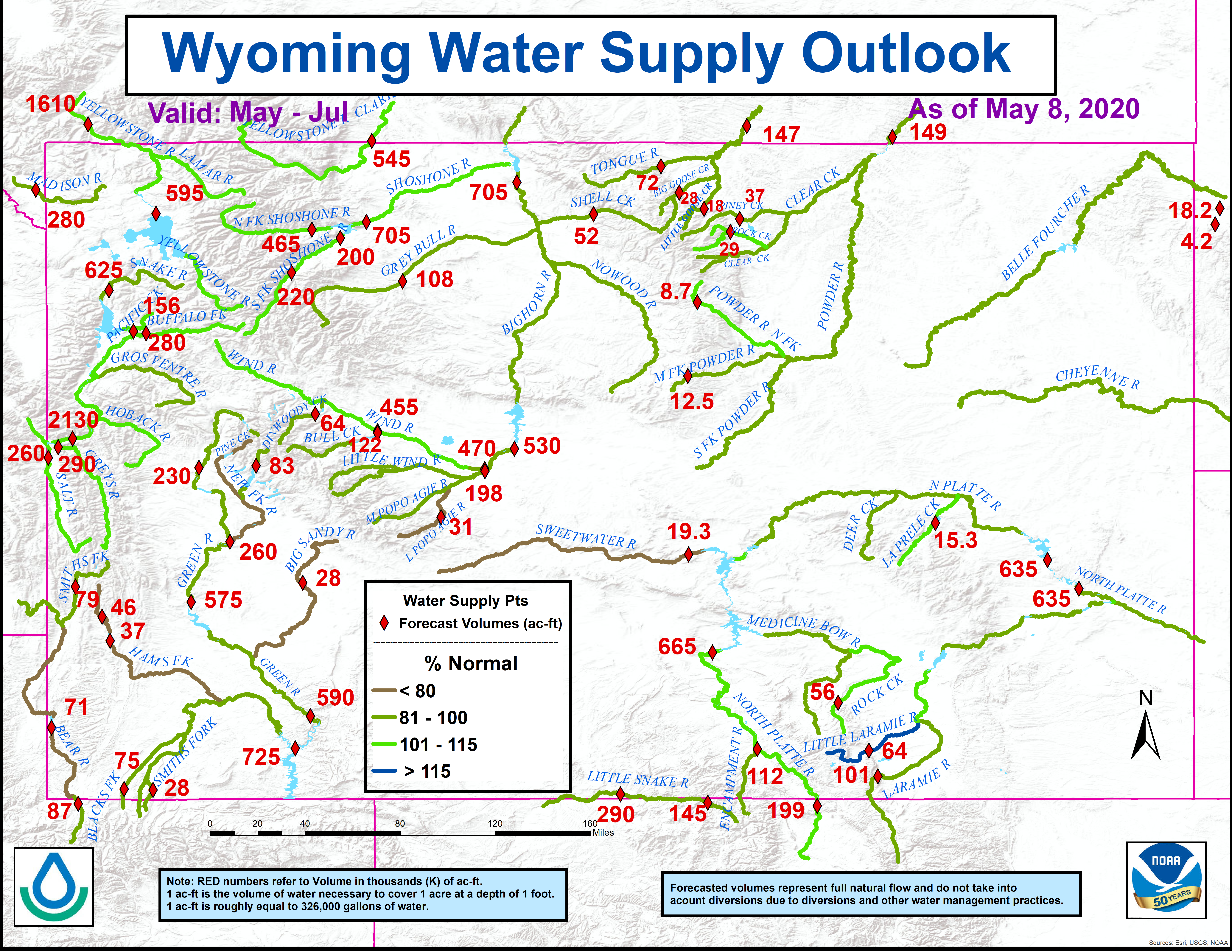
Showers, along with a few strong to severe thunderstorms, are expected from the Great Lakes, New England and southward into the Ohio and Tennessee Valleys. In the wake of this system, a stronger storm is expected to track from the Pacific Northwest, Plains and through the Eastern U.S. this weekend. Strong winds, showers and a larger drop in temperatures are expected this weekend into Monday. Read More >
Western and Central Wyoming
Weather Forecast Office
...Current water year precipitation is averaging 95 to 105 percent of normal across Wyoming…
January 2019 precipitation totals across Wyoming were 110 to 115 percent of average. Precipitation numbers varied between 150 percent of normal over the Belle Fourche River Drainage (northeast Wyoming) to near 70 percent of average over the Big Horn River Basin (north central Wyoming). Current water year (October 2018 - January 2019) precipitation across Wyoming was 95 to 105 percent of average.
Mountain snowpack across Wyoming was 85 to 95 percent of median by early February. Snowpack "water" numbers and/or SWEs were the highest across basins in southeast Wyoming—varying between 100 to 125 percent of median. SWEs across basins in western Wyoming were 75 to 85 percent of median.
Below normal (75 to 90 percent) snowmelt streamflow volumes are expected across several major basins across Wyoming. Above average snowmelt streamflow volumes are expected across the Upper North Platte and Laramie Watersheds. The Wind, Big Horn, and Upper Green Basins are forecasted to have below normal streamflow volumes during the upcoming snowmelt season.
Wyoming reservoirs are averaging 70 to 75 percent of capacity in early February. Reservoirs storages across Wyoming remain above average at 105 to 115 percent for February.
The latest Wyoming water supply outlook graphic:

Forecasts
Severe Weather
Forecast Discussion
User Defined Forecast
Fire Weather
Activity Planner
Hourly Forecasts
Snow and Avalanche
Aviation Weather Decision Support
Hydrology
SnoTel Page
Rivers and Lakes
Weather Safety
NOAA Weather Radio
Preparedness
SkyWarn
StormReady
US Dept of Commerce
National Oceanic and Atmospheric Administration
National Weather Service
Western and Central Wyoming
12744 West U.S. Hwy 26
Riverton, WY 82501
307-857-3898
Comments? Questions? Please Contact Us.

